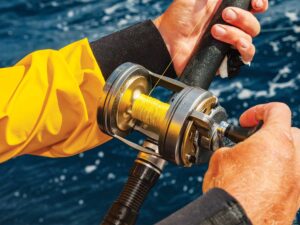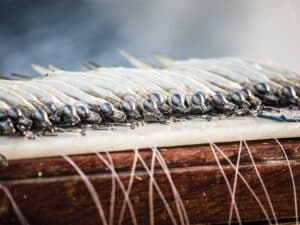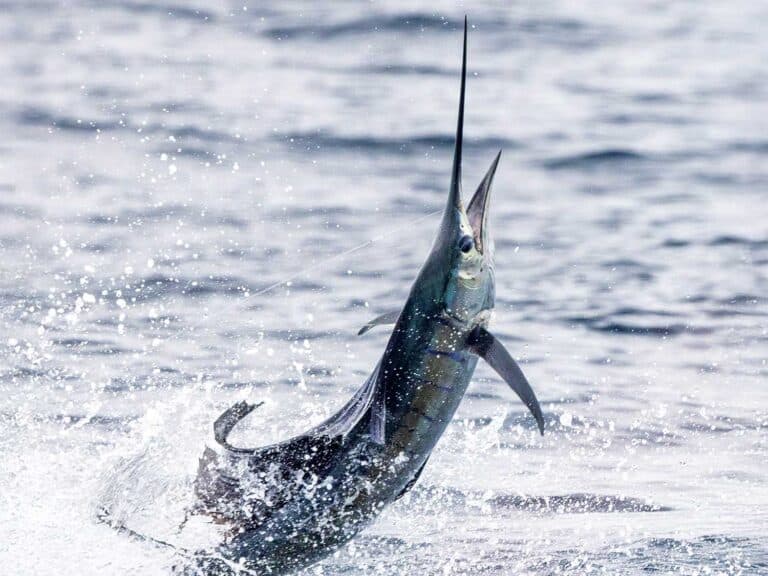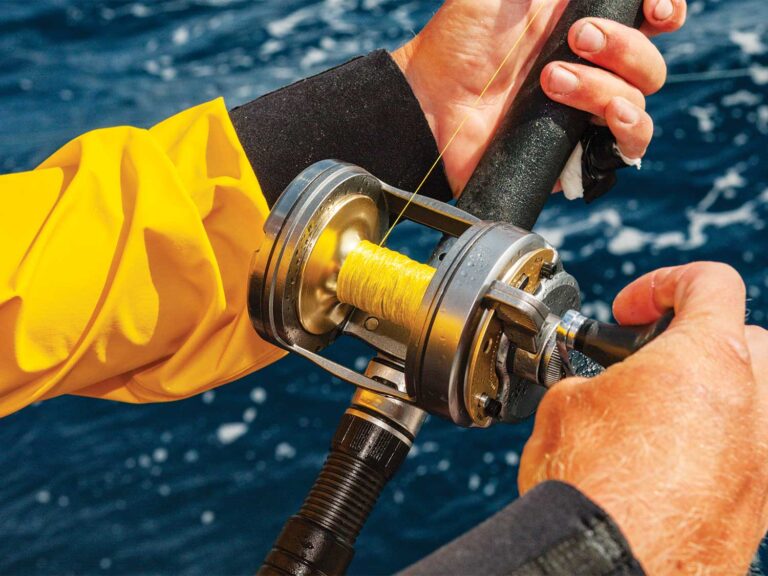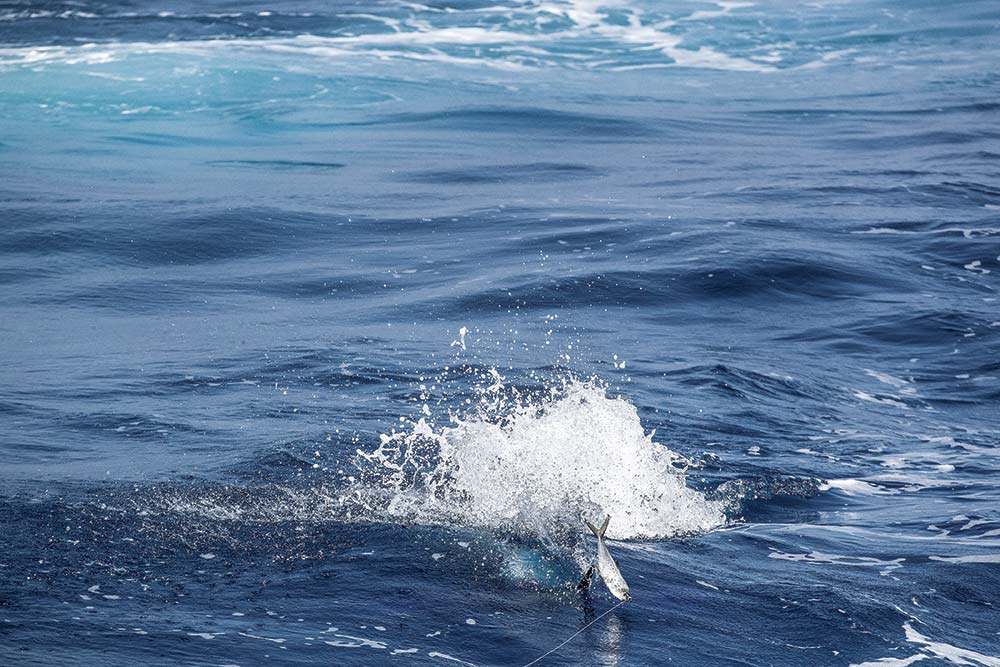
The swimming mackerel is one of the world’s best set-ups when fooling a marlin into taking a bite. No matter where you fish, they will have no problem homing in on this relatively slow-swimming snack. Another bonus: when the bait is rigged correctly, it’s entirely possible to get a second shot at the fish if you don’t come tight the first time. I was very fortunate to learn this rig when I was fishing on Calypso with Capt. Tim Dean in Australia. In three seasons, we made a few minor adjustments for changing sea conditions and situations, but for the most part, it has remained the same: deadly.
Begin by prepping the bait slowly, defrosting a gutted, frozen Spanish mackerel in a saltwater brine and removing the eyes with a deboning tool, making sure to release the entire socket and membrane. Being careful not to break the skin, loosen the meat from the backbone.
You will need three feet of 60-to-100-pound Dacron and a small dropper lead, depending on the size of your bait, a good length of wax floss, scissors and a mortician’s needle.
Read Next: 6 Great Mackerel Rigs
Begin by removing the gills with the scissors, being careful not to tear the throat latch. Secure the floss to the eye of the sinker so you have two equal tag ends and insert the sinker into the bait’s mouth so the eye is near the mouth opening, facing upward. Using the needle and one of the tag ends, begin to sew the mouth shut by pushing the needle down through the inside of the bottom jaw and back around the outside of the lips, pushing the needle through the top of the nose on center all the way through the ring of the sinker and through to the bottom jaw. Repeat with the other tag end and tie a knot with the tag ends underneath the jaw.
Tie an overhand knot in the Dacron to create a 2-inch loop, making sure the tag ends are at least one foot in length. Using your bait needle, make an impression of a cross on the bait’s head just forward of the highest point of the eye socket, centered on the head for a mark. With one of the tag ends, push the needle through the top of the bait’s head, making sure to come out between the throat latch and the gills on the same side you went in, repeating on the other side with the other tag end. Tie two overhand knots and secure the tag ends underneath the throat latch.
No matter where you fish, they will have no problem homing in on this relatively slow-swimming snack.
Cross the tag ends of the Dacron through the eye sockets, tying two overhand knots under the gills, closing them around the weight and pulling the knot down tight to the top of the head.
Cross-stitch the belly closed with the floss, making sure not to overtighten the cross-stitches, which will cause the bait to lose its swimming motion and spin. Using a cinch loop at the end of the Dacron loop, insert the hook and pull it tight.
This rig works particularly well at a speed of 4 to 5 knots, but can be easily modified for faster speeds or rough sea conditions by moving the pulling point forward, which will keep the bait from leaving the water while surfing downsea. A swivel can also be substituted for the loop-to-hook connection, if desired.
